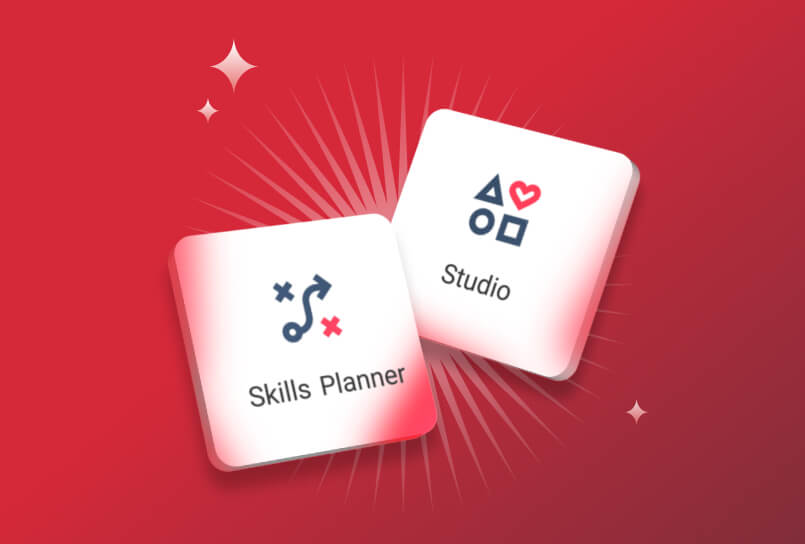Reinventing work with Dean Summlar: A global example
Insights from Schneider Electric's VP of Talent Management and Learning on careers in the 2020s

There’s a lot of talk about how the new world of work is going to be different. HR leaders are recognizing the dominant forces that are fueling these changes, like shifts in the employee–employer relationship and the accelerated pace of digital innovation. But while many businesses are bracing for impact, few executives know where to turn to for guidance.
Since most organizations are entering uncharted territory at the same time, there isn’t an established path forward that every company can follow. However, as leaders begin building foundations for the future of their companies, there are a handful of visionaries that executives can look to for guidance.
Dean Summlar, VP of Talent Management and Learning, is one such pioneer. His organization is reinventing careers and centering the organization’s focus on workforce agility. He sat down with us recently to share some of the tools and best practices that Schneider Electric is harnessing to empower employees.
4 tips for reinventing careers with a talent marketplace
While there are many lessons that leaders can learn from Schneider Electric’s innovative approach to talent management, Summlar emphasizes the following five tips as crucial for unlocking agility:
#1. Take geographic barriers out of the equation
Schneider Electric employs over 135,000 people in more than 100 countries. Organizational silos are a common challenge that many enterprises face, especially when employees are dispersed across nearly every continent. But at Schneider Electric, a person’s opportunities aren’t limited by their physical location.
The enterprise leverages its talent marketplace, Open Talent Market, to dynamically assemble teams and staff projects based on who is the best fit for the opportunity. As a result, Schneider Electric employees have ongoing opportunities to collaborate not only cross-functionally but across the globe as well.
Summlar describes the powerful results they’ve reaped by tapping into their entire global talent pool. “In our New Zealand organization, we posted a project and the person who got assigned to it was based in India, so someone we would have had no idea existed inside our company helped us unlock additional productivity,” Summlar explains.
#2. Put transparency at the top of your priority list
As the Great Resignation demonstrates, many workers are taking a step back, re-evaluating their careers, and questioning what they’re looking for from their jobs. To make sure an organization is living up to its workforce’s evolving expectations, leaders must understand what people actually value in their work.
As Gloat data revealed, it isn’t all about the money: growth opportunities are one of the top two factors that motivate employees to leave their jobs. Approximately one in two workers desire more opportunities to develop their careers and pursue new types of professional challenges.
Even when growth opportunities are available, a lack of transparency often hinders employee development. “The world is a much more transparent place,” Summlar says. “Employers can’t afford to not be transparent right now. Transparency has really changed the game for employers.”
Summlar goes on to credit Schneider Electric’s talent marketplace as a key part of the enterprise’s approach to creating more visibility and democratizing access to opportunities. “Open Talent Market has really created incredible transparency. It has created a de-biased process because the decisions are not in one manager’s hands, all of a sudden our entire online workforce has access to it.”
#3. See the bigger picture
When it comes to strategizing for the new world of work, leaders need to ensure they’re seeing their organization as a whole and devising solutions that will work for employees across the enterprise. “HR teams are maybe not always focusing enough on everyone,” Summlar says. “We focus a lot on the top few in the organization, but we don’t always think about how we liberate the 90% of people that will stay with us, that have infinite value and potential, that we are not able to tap into to our fullest extent.”
No business can afford to lose talent, particularly as quit rates remain elevated and skill gaps widen. To help every employee envision an exciting future with your organization, leaders must showcase the kinds of opportunities that are available and ensure people feel connected—both to their colleagues and to their careers. This can be particularly challenging for large enterprises, where some employees may be used to working with only a small subset of their co-workers. As Summlar defines it, “In an organization as diverse and powerful as Schneider Electric, you’re going to have specialist teams that are most likely working primarily with others on their teams. They might not have as big of a network, so we wanted to create more visibility and opportunity for people across our organization. It really changes the dynamic when people have this level of transparency.”
#4. Stay one step ahead in the race for skills
All signs point to upskilling and reskilling as critical factors in preparing for the next chapter of work. With the World Economic Forum predicting that half of the globe’s workforce will need to be reskilled by 2025, learning new competencies is quickly becoming an enterprise-wide priority.
Summlar explains why impactful upskilling requires more than a one-size-fits-all curriculum. “There’s a skills need, and while there will be a level of education involved, people also need opportunities to practice these skills. We will not be able to grow skills at the rapid rate they need to be grown without projects and gigs.”
To get everyone’s full support and maximize the knowledge within your organization, employees also need to understand how upskilling will benefit them. While organizations once had to rely on cumbersome programs to ensure skills were practiced, talent marketplaces suggest an array of opportunities that help employees put newly learned information into action. The platforms also include dynamic career pathing tools so employees can see how the work they’re doing now will contribute to their long-term professional goals.
To learn more about Schneider Electric’s approach to reinventing work and the game-changing results they’ve achieved, check out their customer success story.




